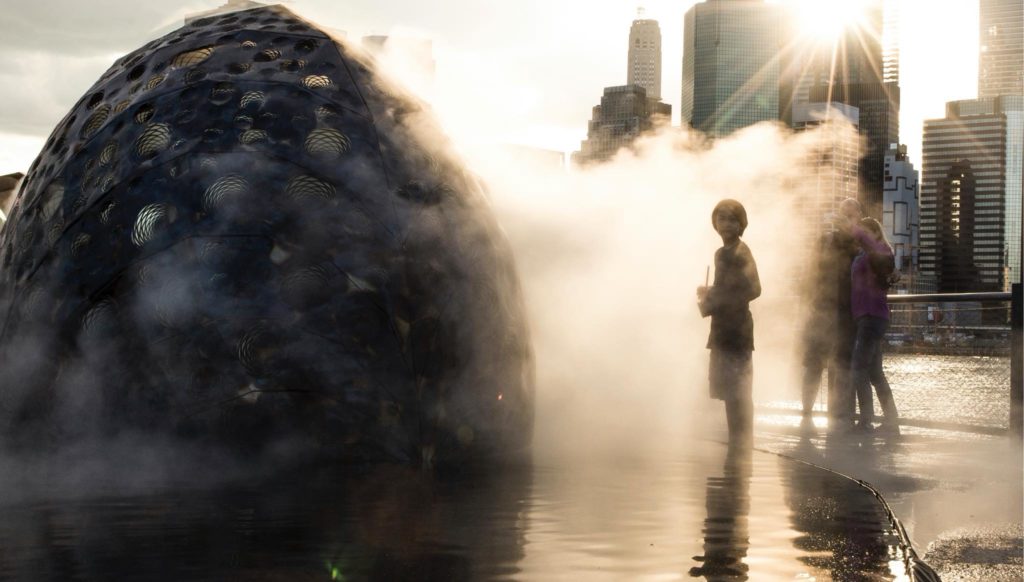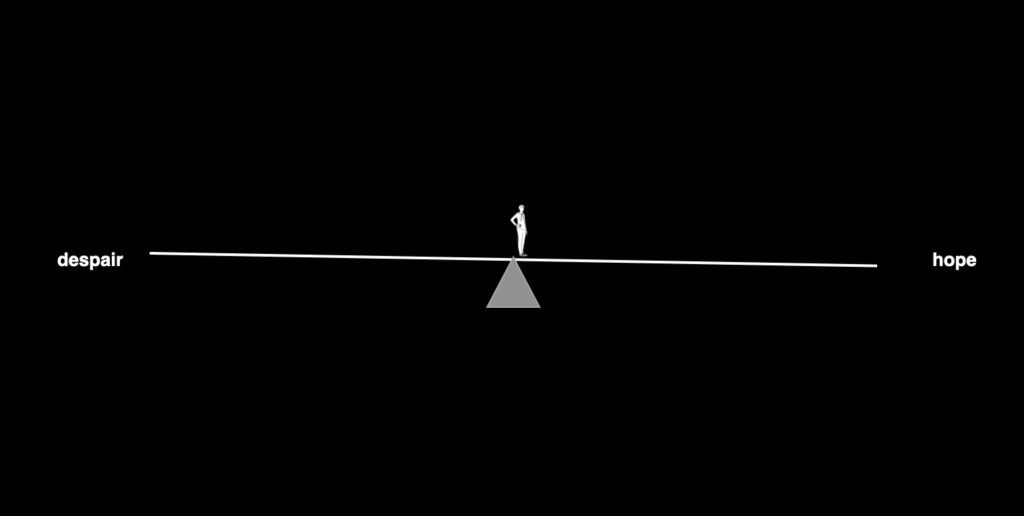How do Data, Story, and Hope Intersect?
We recently hosted our second salon in our collaborative series, The Future We Create with Collective Future. Our guest was David Delgado, a cultural, visual strategist and artist whose work deals mainly with space exploration. He is also a self-proclaimed advocate of wonder. The conversation was co-hosted by Ronni Kimm and Verdant’s Brian Dolan during which, they discussed the role of art in driving curiosity and wonder and how those states of mind can bring about the future we want to create.
In today’s COVID times, hope can be a unifying and powerful factor for humanity. Hope keeps us from falling into complete despair and reminds us what we aspire to return to. Humans, much like the character balancing on a line in David’s artwork below, are constantly balancing the line between despair on one side, and hope on the other, but with a slightly optimistic tendency toward hope.
Sparking Curiosity for Space
Curiosity lives within the work that Brian, David, and Ronni do but when it comes to space, nothing sparks our curious human nature more than the unknown realms of planets and stars in our universe and beyond. Art enables us to dive into that curiosity with childlike wonder and awe. In his installation, “Metamorphosis,” David was tasked with bringing awareness to the European Space Agency’s Rosetta Mission which made history in 2014 by landing on a comet. In celebration of this event, a giant fabricated comet “crashed” on the streets of New York. Shrouded in smoky dust, fog, and steam it appeared out of nowhere, it’s odd lights and comet tail a strange sight to behold. Adding to the mystique was the lack of accompaniment or explanation of the piece. One day it simply appeared to the delight of adults and children alike.
People stood by and walked around it. They touched it, wondering what it was. The photographs capturing the event look like a scene from a futuristic and dystopian sci-fi movie.

The one of a kind artwork would spark conversation and curiosity without generating any answers. That was the point. There is so little we know about the universe, and even when we do send machines into space to do the scouting for us, what comes back often only compounds the mystery. As Brian pointed out we may look into space and see a void, but it can be something different with time or dimensions. At times the robot may see nothing, then another time, it sees something. While humans are good at finding new knowledge within our understanding of the world, we lack an understanding of how this process actually happens. AI acquires insight a little bit at a time, but it still doesn’t have an understanding of the world.
The Observer: How We Create the Future
In creating our future, where does the observer fit? For the purposes of theorizing about the future, the observer is simply someone in the future who exists. It is assumed that this person will need and experience things differently in the future than we do in the present. When we think of the things the observer needs or might need, this is one way we can innovate new products and services of the future.
New rules can be asserted in our present to shape the future. As Ronni remarked, “The future is something complex. There is the sci-fi future, the future 10 years from now, and everything after right now.” Stories will be the way we navigate into the future because as Ronni continued, “we are missing the language around how we understand the future.”
Extending the story into the future can allow us to see the possibilities that weren’t previously available to us and get creative about our solutions.
Getting Creative
Creativity is at the heart of innovation. The three shared their creative practices and similarities and differences were brought into relief, For David, he likes to bring together all sorts of visuals in one place, and once they are all together, his ideas emerge. Likewise, Ronni uses a visual or sketch practice in order to generate new ideas. Brian, on the other hand, gave all of us a pass on being procrastinators. He needs to think things through before executing explaining that sometimes leaving things until the last minute creates an extra sense of pressure that releases his creative expression.
If you are interested in watching the whole salon session you can access it here.



